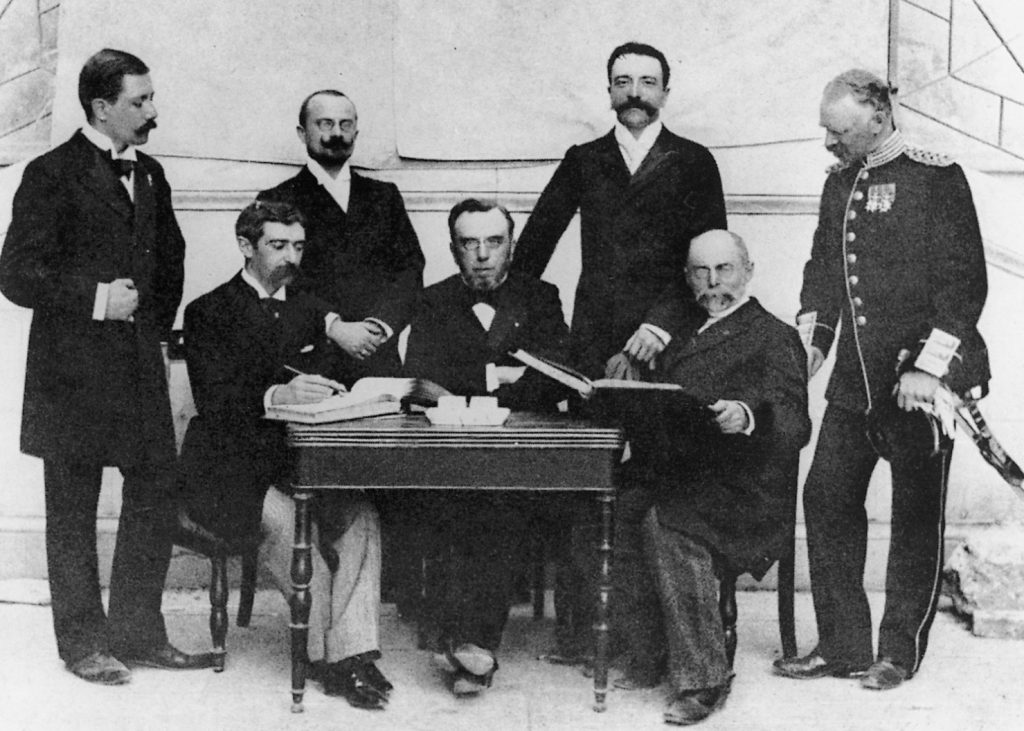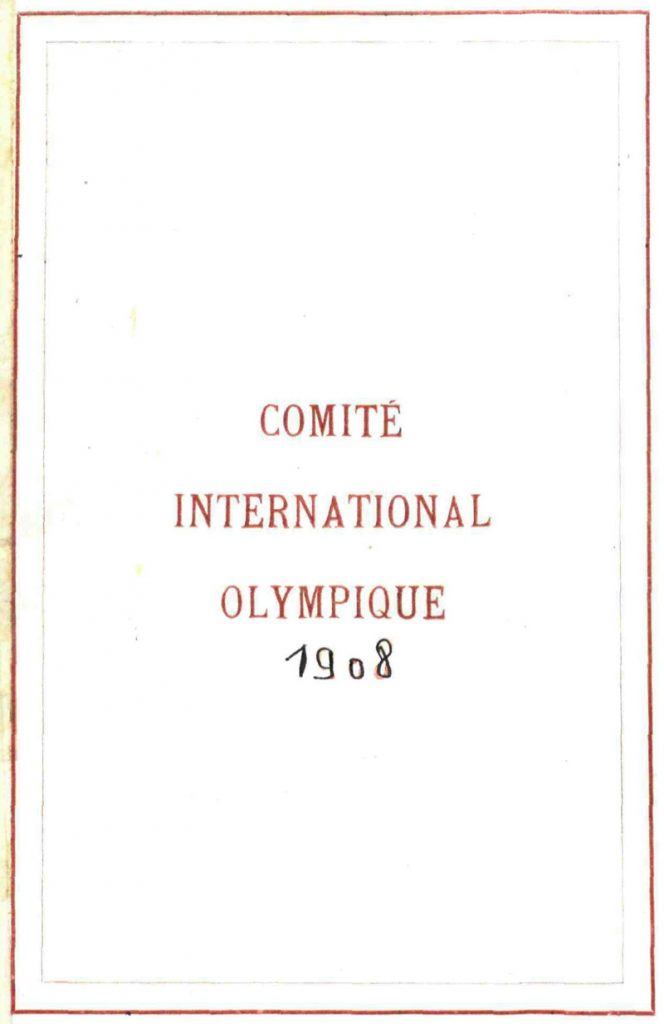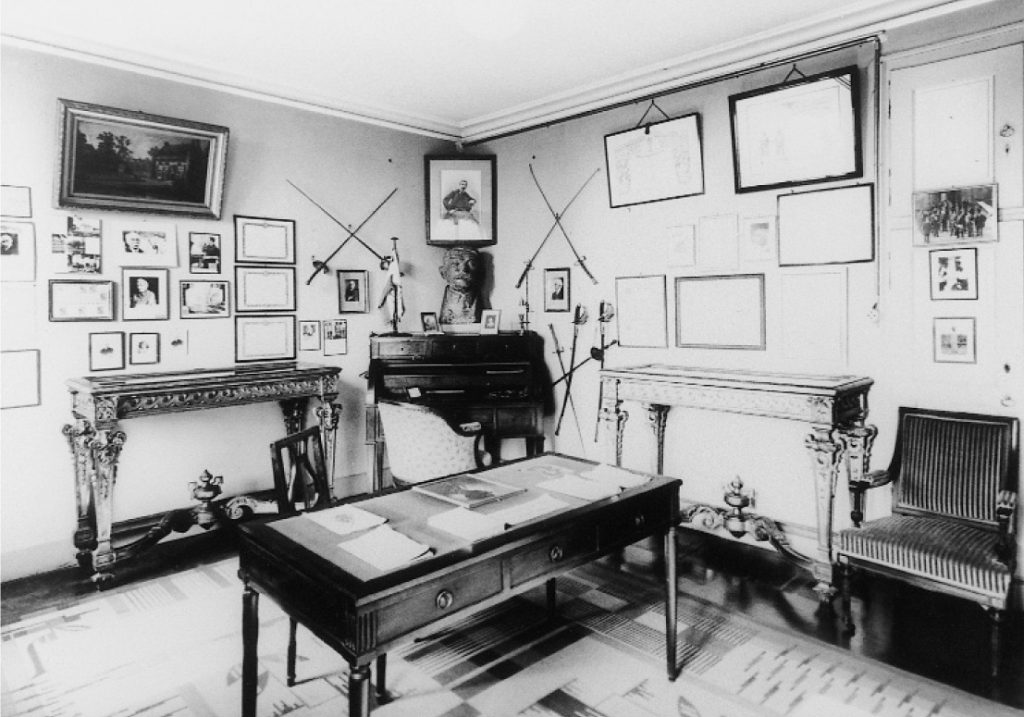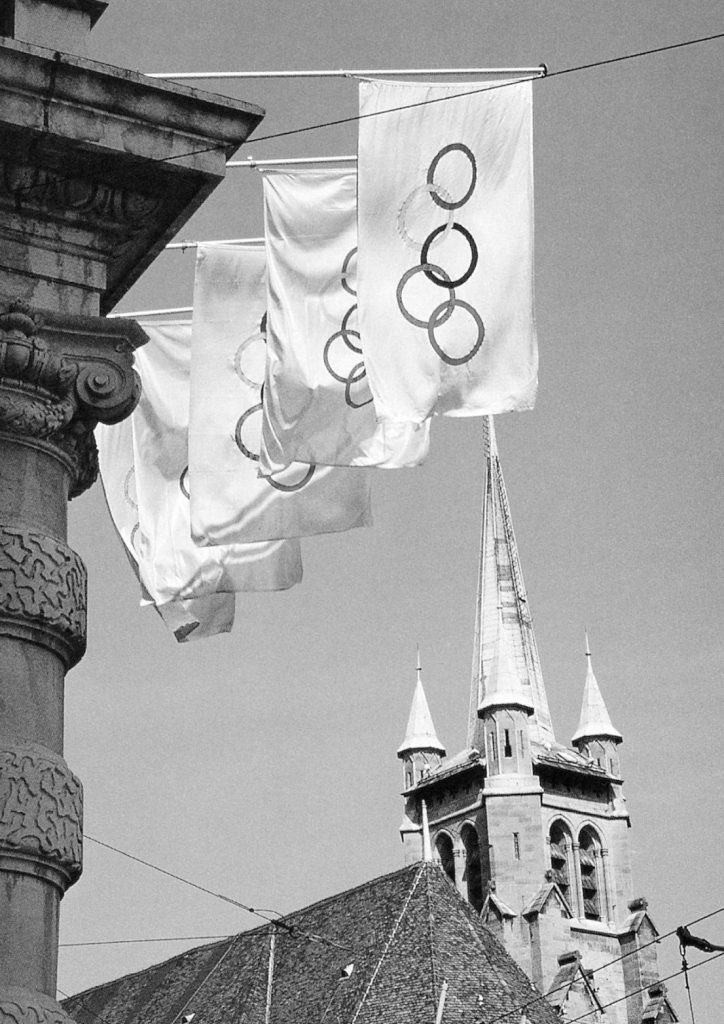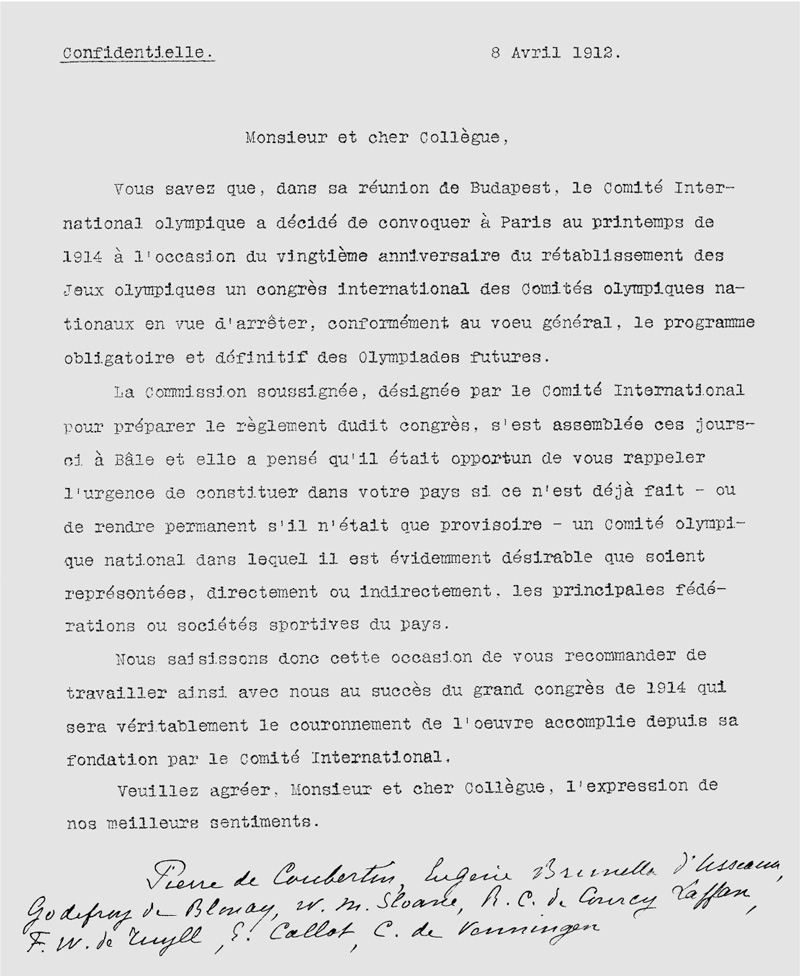Pierre de Coubertin and the Governance of the IOC during his Presidency
Stephan Wassong
© INTERNATIONAL OLYMPIC COMMITTEE
Jean-Loup Chappelet explains that ´governance’ is a “seventeenth-century French word designating the territory controlled by a governor”.[1] It has its etymological roots in the Greek and Latin word(s) kyberno, respectively gubernare, meaning to handle and/or to be responsible for the main rudder of a ship. Studies on the governance of the Olympic Movement have increased in the recent years. In this context it is often referred to Thomas Bach and his speech Unity in Diversity – Respect, Responsibility, Reliability which he deliveredat the XIII Olympic Congress in Copenhagen in 2009. In this speech Bach, who was not yet president of the IOC at that time, draws on a working paper of the International Olympic Committee (IOC) entitled Basic Universal Principles of Good Governance of the Olympic and Sports Movement and edited in 2008. It was mentioned for the first time in the Olympic Charter in 2004 (article 19.3.2) with reference to internal policies:
“The IOC Executive-Board approves all internal governance regulations relating to its organisation.”[2]
However, a more comprehensive usage of the term, regarding its meaning and interpretation, did not surface until 2011. Hereby, governance was included within the Olympic Charter’s definition of the Fundamental Principles of Olympism:
“5. Recognising that sport occurs within the framework of society, sports organisations within the Olympic Movement shall have the rights and obligations of autonomy, which include freely establishing and controlling the rules of sport, determining the structure and governance of their organisations, enjoying the right of elections free from any outside influence and the responsibility for ensuring that principles of good governance be applied.”[3]
Although the term ´governance´ was not explicitly used at the beginning of the Olympic Movement, initiatives and policies were introduced to regulate the development of the IOC and core aspects of the Olympic idea with its educational objectives. A few of these governance regulations, which were introduced during the time of Coubertin´s presidency (1896 – 1925) are mentioned in the following.
The IOC was founded on 23rd June 1894 on the initiative of French Baron Pierre de Coubertin during the Congrès International De Paris Pour Le Rétablissement Des Jeux Olympiques at the Sorbonne in Paris. The inaugural IOC was mainly composed of individuals who had supported Coubertin’s idea in the years prior to the establishment of the modern Olympic Movement. In total, sixteen people from thirteen different nations constituted the original IOC. The first bulletin of the IOC contained the following list of IOC members: Demetrius Vikelas (Greece), Pierre de Coubertin (France), Ernest Callot (France), William M. Sloane (USA), Ferdinando Lucchesi-Palli (Italy), Aleksey D. Boutowsky (Russia), Jiri Guth-Jarkovsky (Bohemia), Viktor G. Balck (Sweden), Leonard A. Cuff (New Zealand), José B. Zubiaur (Argentina), Charles Herbert (Great Britain), Arthur O.V.R. Amphtill (Great Britain) and Ferenc Kemény (Hungary). The first president became Vikelas who remained in office till the end of the Olympic Games in Athens in 1896. He was followed by Coubertin.
Session of IOC members in Athens, 1896.
From left to right (standing):
Gebhardt. Guth-Jarkovsky, Kemémy, Balck.
Seated:
Coubertin, Vikelas, Butowski.
© International Olympic Committee
As well as these decisions on the composition of the IOC and the choice of Athens as first host city of the modern Olympic Games in 1896, a core amateur definition was devised. This was perceived to be necessary for two reasons. Rules had to be standardized to create the same starting conditions for all athletes. Without doubt, these rules had to be based on the principle of amateurism to safeguard the Olympic competitions from what Coubertin and his colleagues in the IOC feared most: namely professionalism. It was assumed that professionalism in sport would promote unregulated and unfair achievement; this was a direction which was viewed as a breeding ground for bribery and corruption. Without doubt, this could not be in accordance with the objective of the Olympic idea, to use sport as a tool for developing moral and social character traits, including honesty, fair play, loyalty and friendship. The participants at the congress in Paris agreed on the following core amateur rule:
“The following shall be considered an amateur athlete:
Any individual who has never participated in a competition open to all comers, nor competed for a cash prize, or for a prize of any amount of money regardless of its source, specifically from admissions to the field – or with professionals – and who has never been, at any time in his life, a teacher or paid instructor in physical exercise competitions.”[4]
The international composition of the IOC reflected Coubertin’s universal ambitions with the Olympic Movement. He foresaw that the IOC would maintain a group of individuals that self-recruited new members who could contribute to the global development of the Olympic Movement. According to Coubertin, the IOC members needed to be politically independent, could afford their own travel expenses to IOC meetings and had a respected social status within their countries. As a consequence, the IOC membership mainly consisted of individuals with a European, aristocratic background during the first two decades of its existence. There were a few exceptions: Cuff from New Zealand was amongst the first IOC members in 1894 and represented Australasia, in 1909 Japanese educator Kano Jigoro became the first IOC member from Asia, and in 1910 the Greek Angelo Bolanaki, who also had an Egyptian passport, became the first African IOC member.[5]
The first regulations on the recruitment of IOC members appear in the first Olympic Charter, published in 1908. Therein, the self-recruiting process is determined and the independence of each member is emphasised. The presidential term was set for 10 years with the possibility of re-election. Coubertin essentially ran the organisation by himself in collaboration with the respective departments established in the respective host cities for the organisation of the Olympic Games.
Olympic Charter 1908
In 1915, Coubertin undertook an important and pioneering administrative step by moving the bureaucratic organization of the IOC from his home in Paris to Lausanne, Switzerland, in an attempt to protect the neutrality of the Olympic Movement during the War. In April 1915 the mayor and the municipality of Lausanne welcomed this transfer and organized a small reception in the presence of Coubertin and Godefroy de Blonay who was member of the IOC in Switzerland from 1899 to 1937. The municipality offered Coubertin a room in the Casino of Montbenon as the IOC headquarter. From 1915 till 1922 Coubertin still worked from his home in Paris and stayed in a hotel when he was in Lausanne. In 1922 Coubertin left Paris permanently and moved to Lausanne with his family. In the following year he accepted the offer from the municipality to move into an apartment in the Villa Mon-Repos.
Restitution of Coubertin`s office in the Villa Mon-Repos.
© International Olympic Committee
The villa, which is the office of Olympic Solidarity today, became the new headquarter of the IOC, together with the first Olympic Museum. On 23rd of June 1994 Lausanne officially became the Olympic Capital to celebrate the centennial of the IOC.
Lausanne: The Olympic Capital.
© International Olympic Committee
The establishment and the continuity of the Olympic Games in the first decade of the 20th century caused the genesis of stakeholders that would decisively influence the IOC membership and the governance of the Olympic Movement. National Olympic Committees (NOCs) were created in many countries to coordinate the teams for the Olympic Games. On 8th April 1912 Coubertin sent out a circular letter to all IOC members requesting them to establish a NOC in their country, if they had not already done so, or to make such a committee permanent if it had only been set up temporarily. Coubertin went out stating that all the main sporting federations and societies should be represented in this NOC.
Circular letter from Coubertin to all IOC members, 8th April, 1912
© International Olympic Committee
By the time of the 1912 Stockholm Olympic Games, 22 NOCs had been founded in Argentina, Austria, Belgium, Bohemia, Canada, Chile, Denmark, Finland, France, Germany, Great Britain, Greece, Hungary, Italy, Luxembourg, Norway, Russia, Switzerland, Serbia, South Africa, The Netherlands and the United States. This development accelerated with the increasing global reach of the Olympic Movement. The International Sport Federations (IFs) are the other type of organizations that emerged. Before the First World War, thirteen of these international governing bodies of individual sports had been founded: gymnastics (founded in 1881), rowing (1892), ice hockey (1892), ice skating (1892), cycling (1900), football (1904), shooting (1907), sailing (1907) and swimming (1908), athletics (1913), wrestling (1913) and fencing (1913).
After the First World War, the IOC members met for the first time for an IOC Session in April 1919 in Lausanne. Until this time, the IOC had elected 87 different men to become IOC members. An Olympic Congress was planned in 1921 in Lausanne to address the increasing demands of the IFs, voiced during the 1920 Antwerp Olympic Games. The Congress was held in conjunction with the annual IOC Session at which Coubertin initiated a reform of the governance processes in the IOC with the introduction of an executive board. Coubertin wanted to have a decision-making body in place for times when he was not personally available. However, the development of this new process took time. The first half of the 1920s also saw an increasing internationalization of the IOC membership. In total 43 new IOC members from 29 different countries were co-opted between 1919 and 1925.
At the IOC Session in Prague that took place in Prague from 26th to 28th May 1925 Coubertin resigned as President of the IOC and the assembly elected Count Henri Baillet-Latour as his successor. As Coubertin`s term of office lasted until 1st September 1925 the 8th Olympic Congress that directly followed the session could still be held under his presidency. Coubertin became honorary president of the IOC for life.
[1] Chappelet, Jean-Loup: Autonomy and governance. Necessary bedfellows in the fight against corruption in sport. In: Sweeney, G. & McCarthy, K. (Eds.): Transparency International: Global Corruption Report: Sport. Abingdon 2016, 16.
[2] IOC: Olympic Charter 2004. Lausanne 2004, 45.
[3] IOC: Olympic Charter 2011. Lausanne 2011, 10.
[4] International Olympic Committee (Editing Director: Norbert Müller): Pierre de Coubertin 1863 – 1937. Olympism Selected Writings. Lausanne 2000, 636.
[5] This paragraph and the following ones are taken mainly from: Krieger, Jörg & Wassong, Stephan: The Composition of the IOC: Origins and Key Turning Points in the Governance of the Olympic Movement. In: Chatziefstathiou, Dikaia et al. (Eds.): Handbook of Olympic and Paralympic Games. (to be published in 2019).


